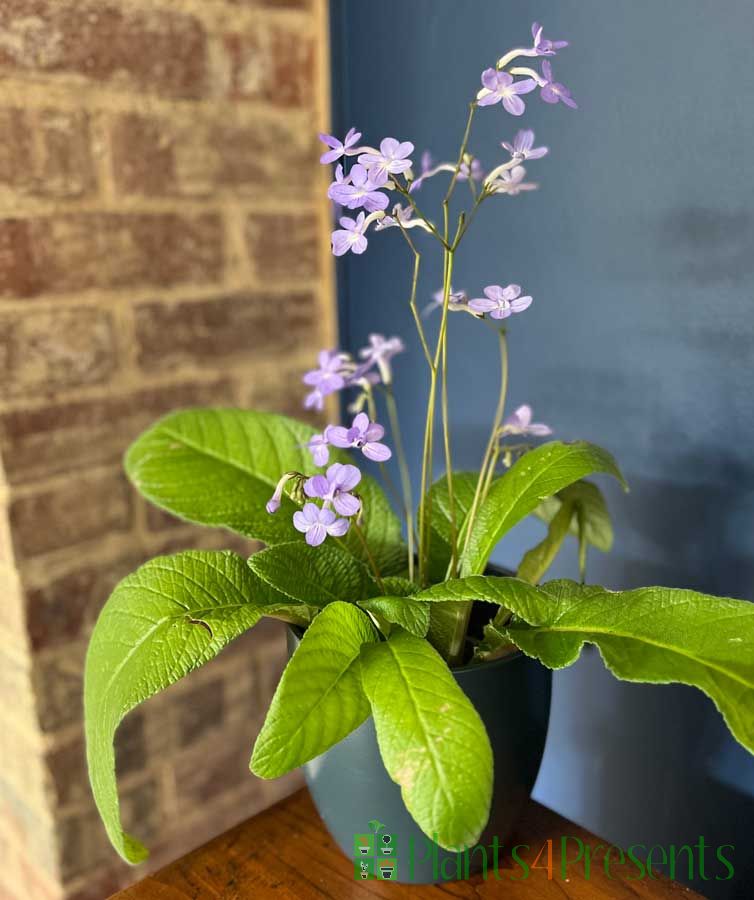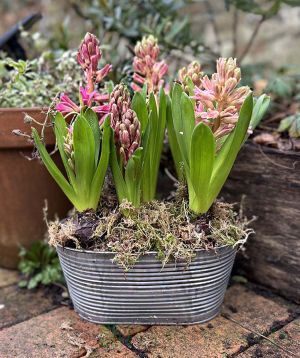Cape Primrose
Out of stock


- A super easy and rewarding houseplant.
- Choose from a range of stylish pots included in the price
- Available again Spring 2026
Sorry we've now come to the end of the season for these pretty and long flowering plants but we do still have lots of other lovely houseplants available for next day delivery.
Easy to care for and producing flowers in a range of pretty pinks and purples from spring through to late summer, you can understand why these cape primrose or Streptocarpus are so popular in the UK. Originating from South Africa, they will do very well in a bright and warm spot in the home. A great way to say thank you, our Cape Primose plants offer a beautiful shower of colour for any room in your home.
 4.5/ 5
6 reviews
4.5/ 5
6 reviews



My cousin was delighted to receive a beautiful Cape Primrose in a pot which complemented the colour perfectly. The staff who advised me over the phone had clearly made the right recommendation.

As it was a gift sent direct to the recipient I did not see the plant in question, but was told it was a lovely plant and a beautiful colour.

Fantastic product and service all around

Lovely plant with attractive flower. It would have been better value if a little cheaper.

I was the orderer not the receiver so cannot comment further!

Cape prirose smaller than indicated in photo on webpage

These instructions are sent with the plant gift
Easy to care for and producing flowers in a range of pretty pinks and purples from spring though to late summer, cape primroses or Streptocarpus are understandably popular in the UK. Originating from South Africa, they will do very well in a bright and warm spot in the home.
Your cape primrose originates from a warm sunny climate, and will do best in a bright room, or conservatory but do ensure that it is away from direct sunlight. An east or west facing window is perfect in the summer months, and in the autumn / winter you might want to consider moving it to a south facing window where it will get as much light as possible. They also like to be warm, and normal room temperatures above 7 °C are ideal. Move away from the window at night if necessary.
During the spring and summer months your plant will need regular watering, either from the top of the soil, or by sitting the pot in a tray of water for 30 minutes. Cape primroses do not like their roots too wet and so either way make sure that the plant is not sitting in water for long periods of time to prevent root rot. In the winter only water when the soil is dry.
Cape primroses work hard producing beautiful flowers all summer long, and so feed them every 2 weeks or so from April to the beginning of October. One with a relatively hight potassium content like tomato feed is ideal. There is no need to feed your plant during the winter.
Cut back dead flower stems at their base. Leaves can sometimes naturally die back too and can be removed to keep the plant looking its best.
Wait until spring if your plant needs repotting, and only go up 1 pot size so that there isn’t too much excess soil around the roots. You can stop feeding the plant for a month or so after repotting while the roots grow into the fresh compost.
Problem solving
Leaves rotting at the base are a sign that the soil has been too damp. Simply remove the dead leaves and allow the soil to dry out before watering again. Conversely, wilting leaves indicate that your plant is thirsty and needs water.
If the leaves are too big, move your plant somewhere where it can receive brighter indirect sunlight for longer periods during the day. The other cause could be that the plant is getting too many nutrients, in which case feed the plant less often.
Brown patches on the leaves are the result of exposure to direct sunlight. Move the plant somewhere where it is in indirect light.
It is natural for the tips of leaves to die back in the autumn/winter. Simply trim these off to tidy up the plant.















